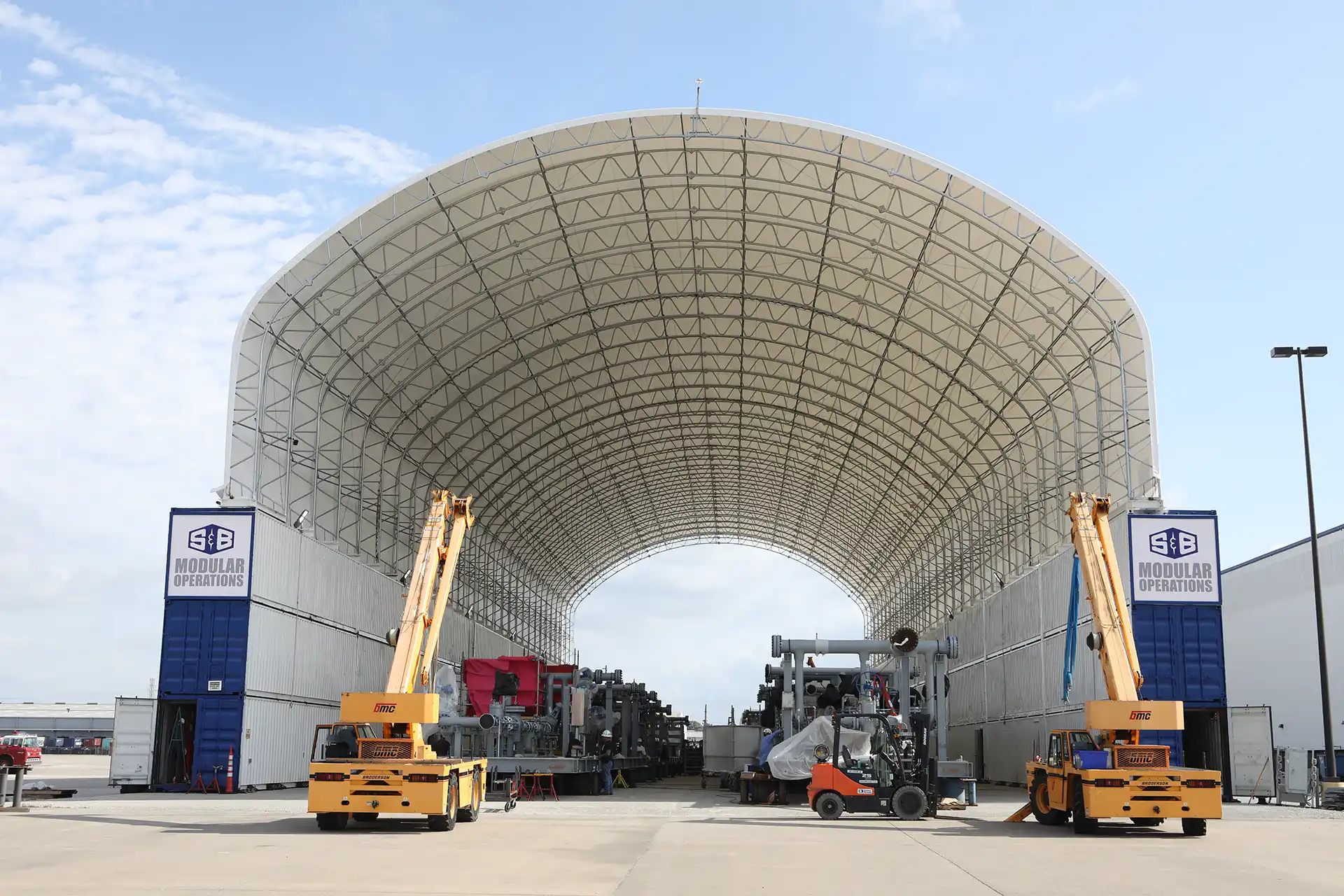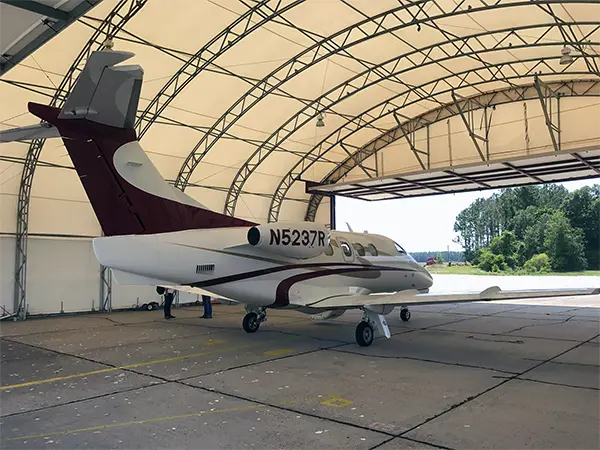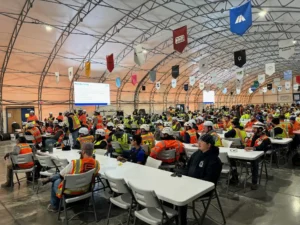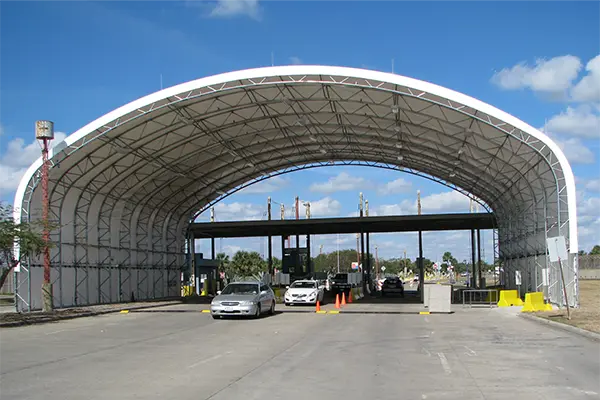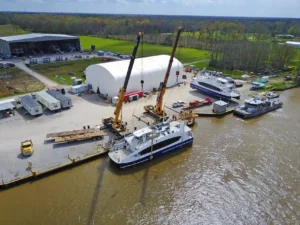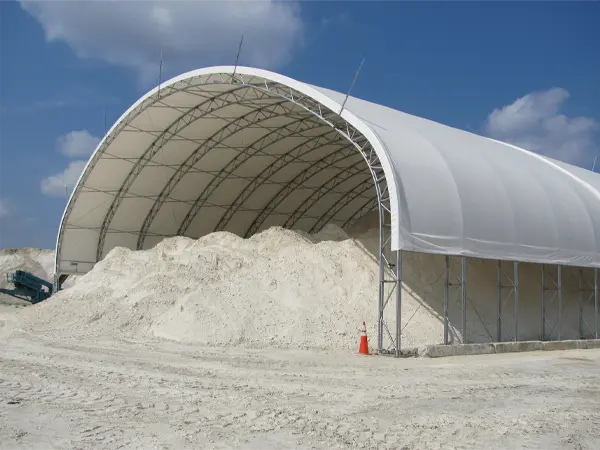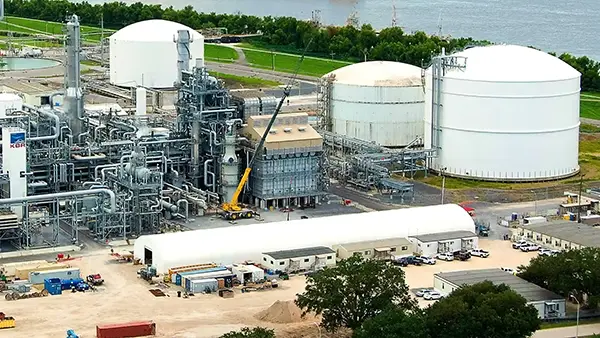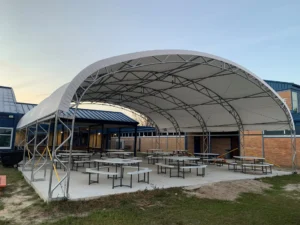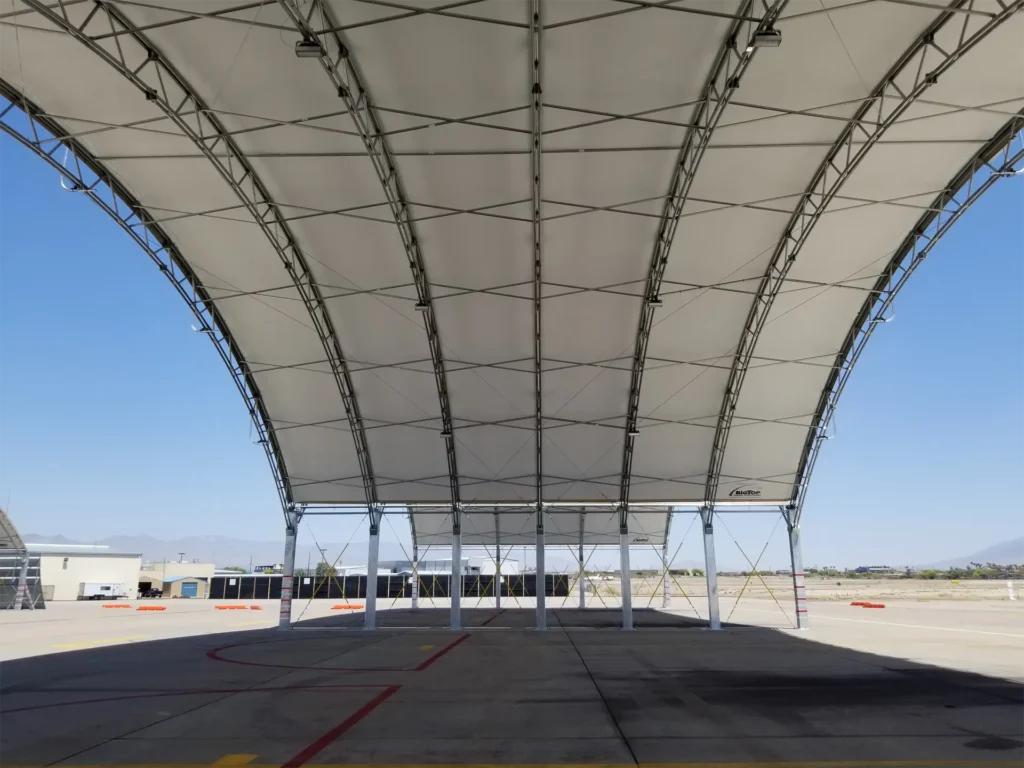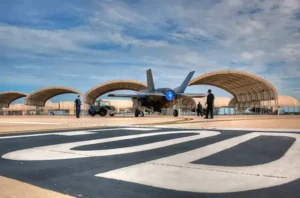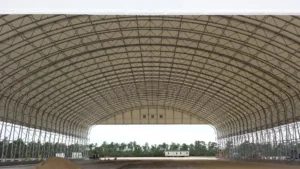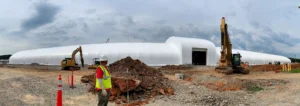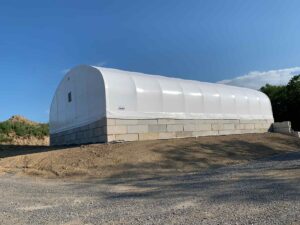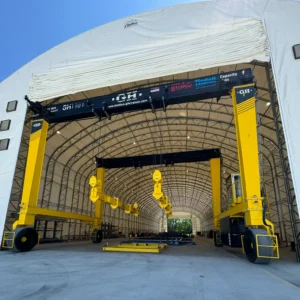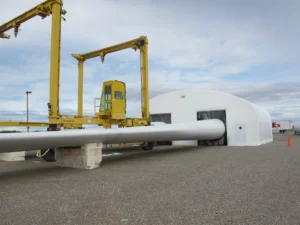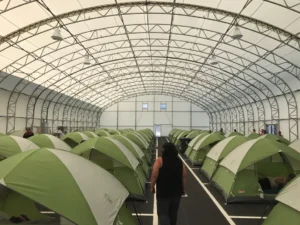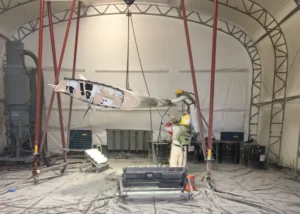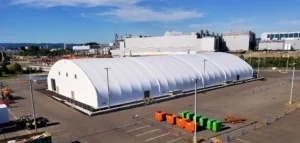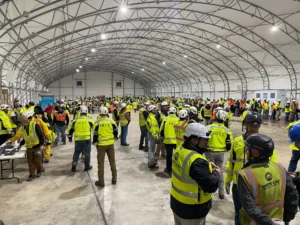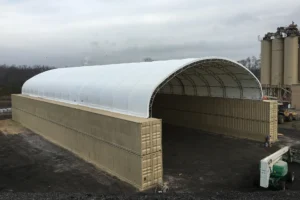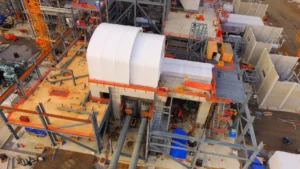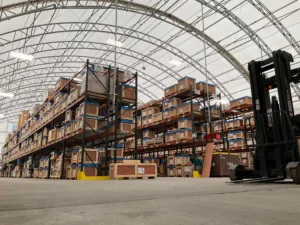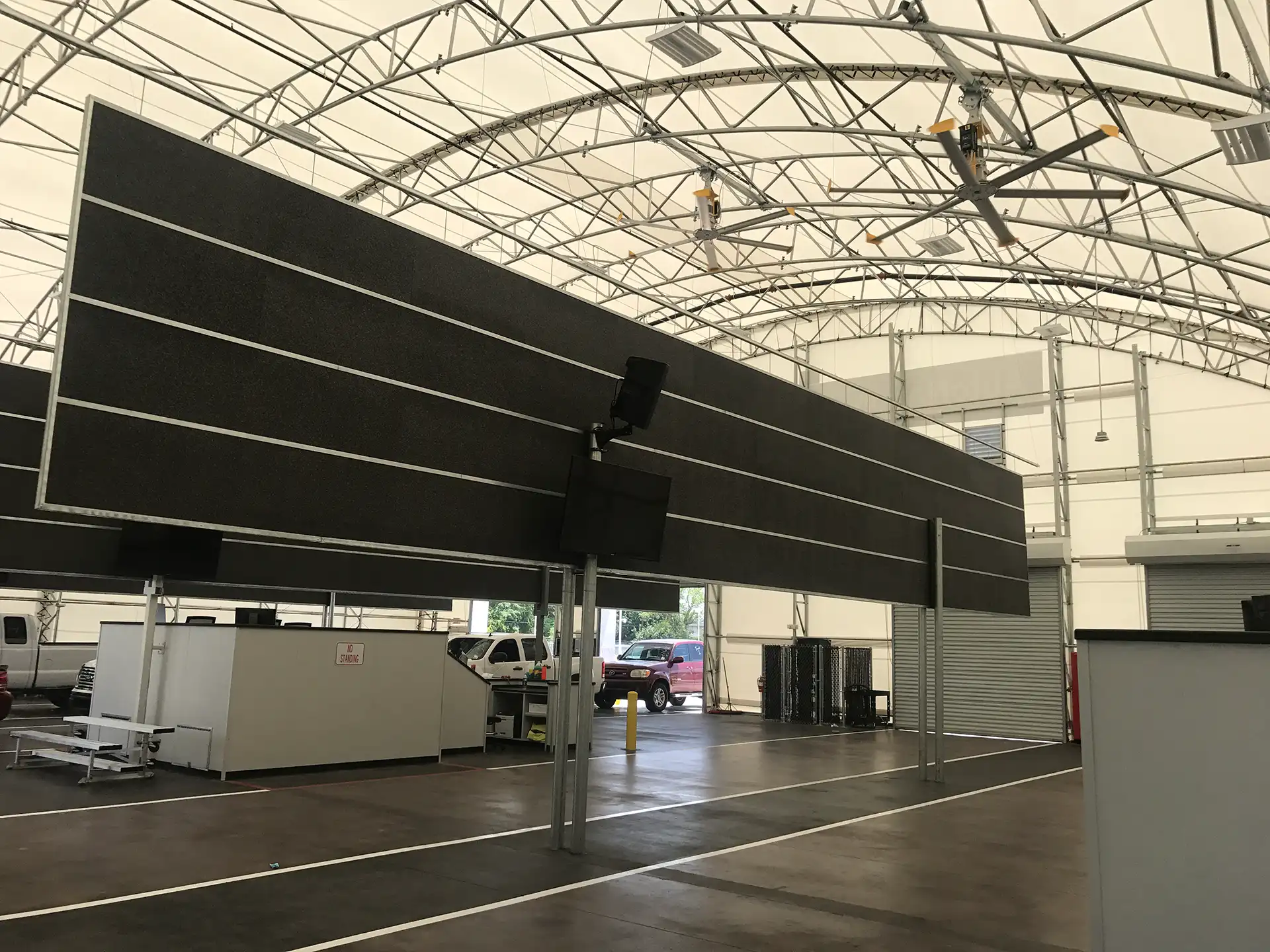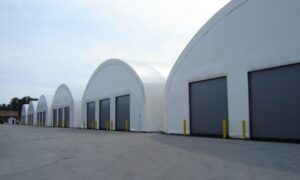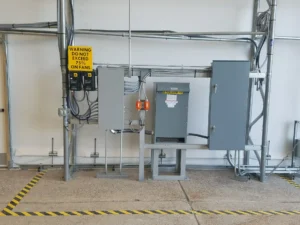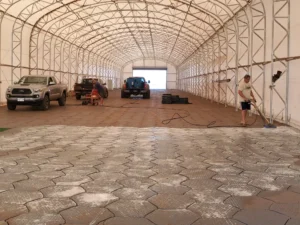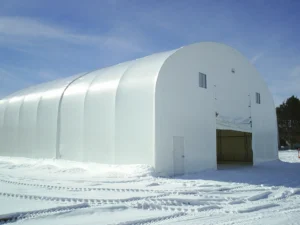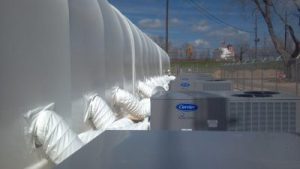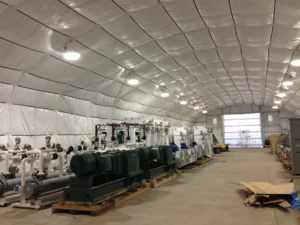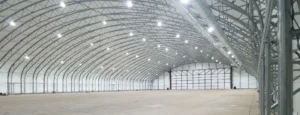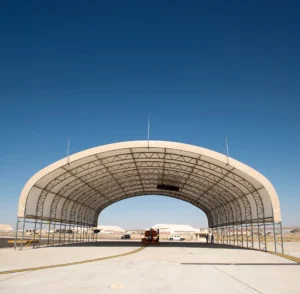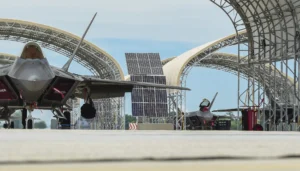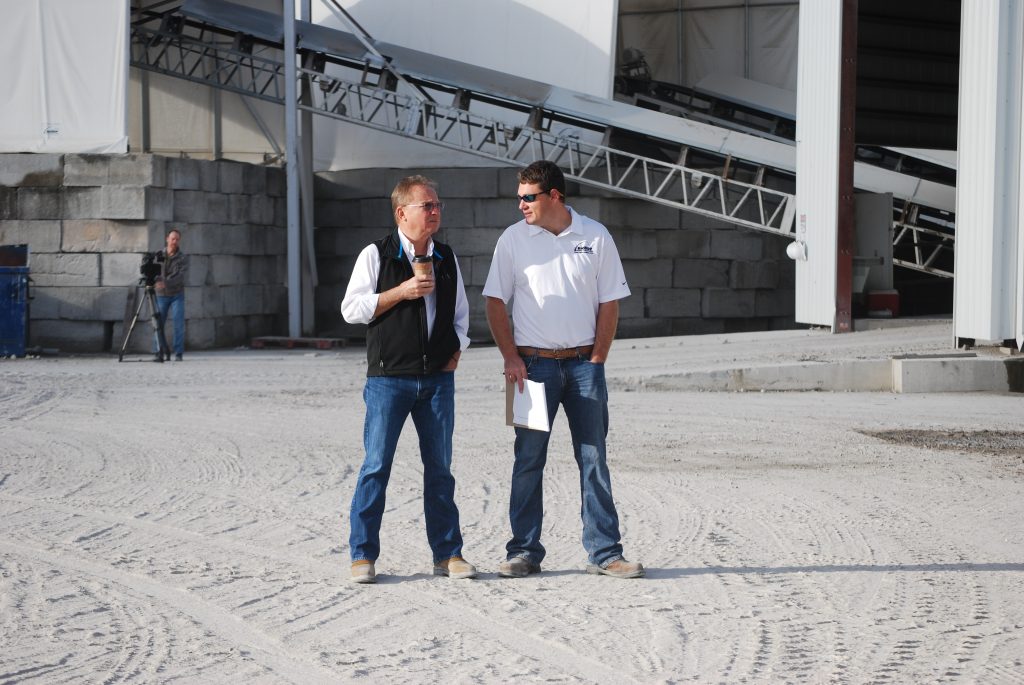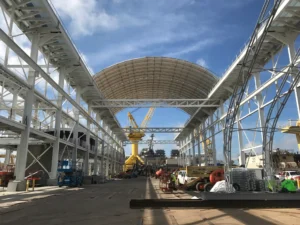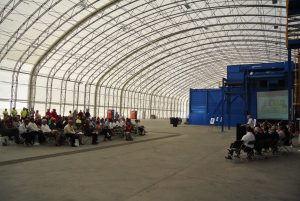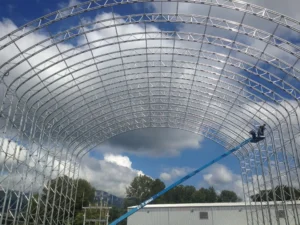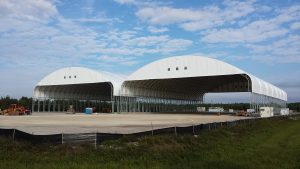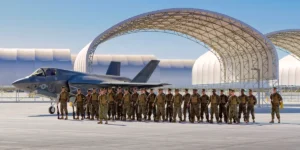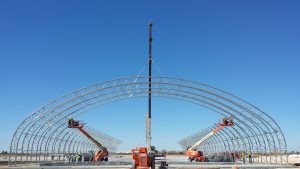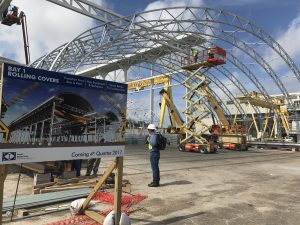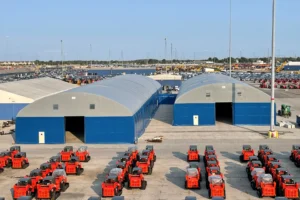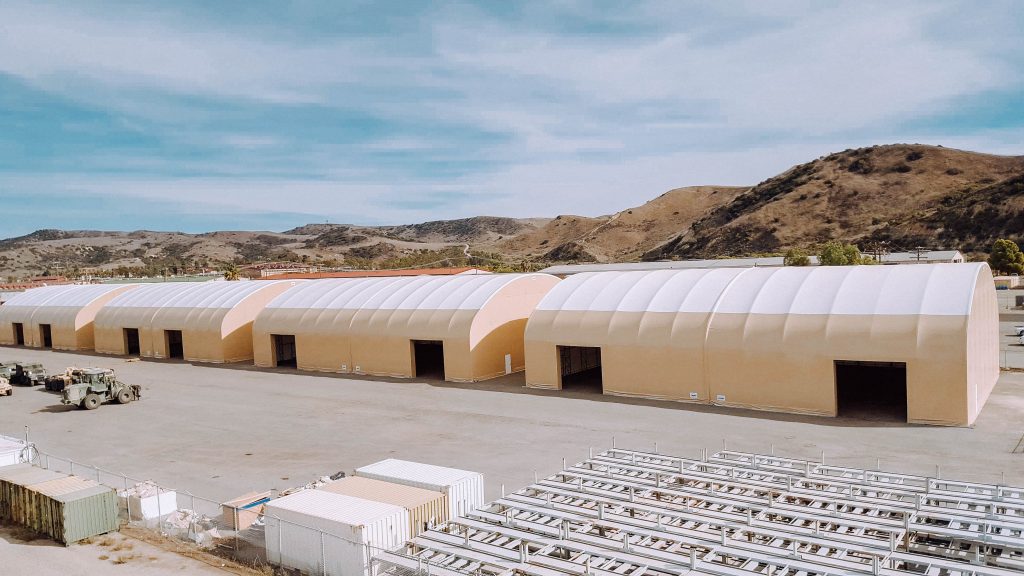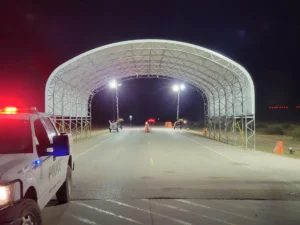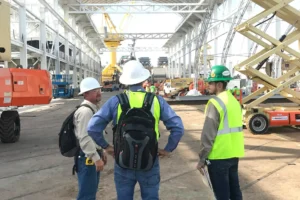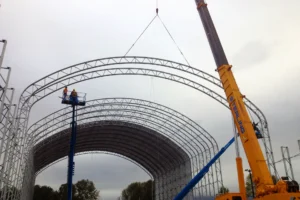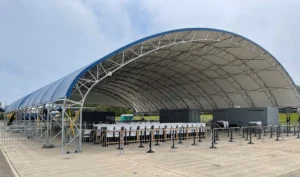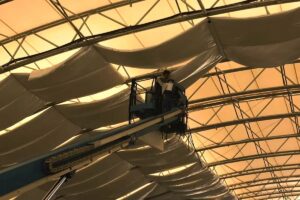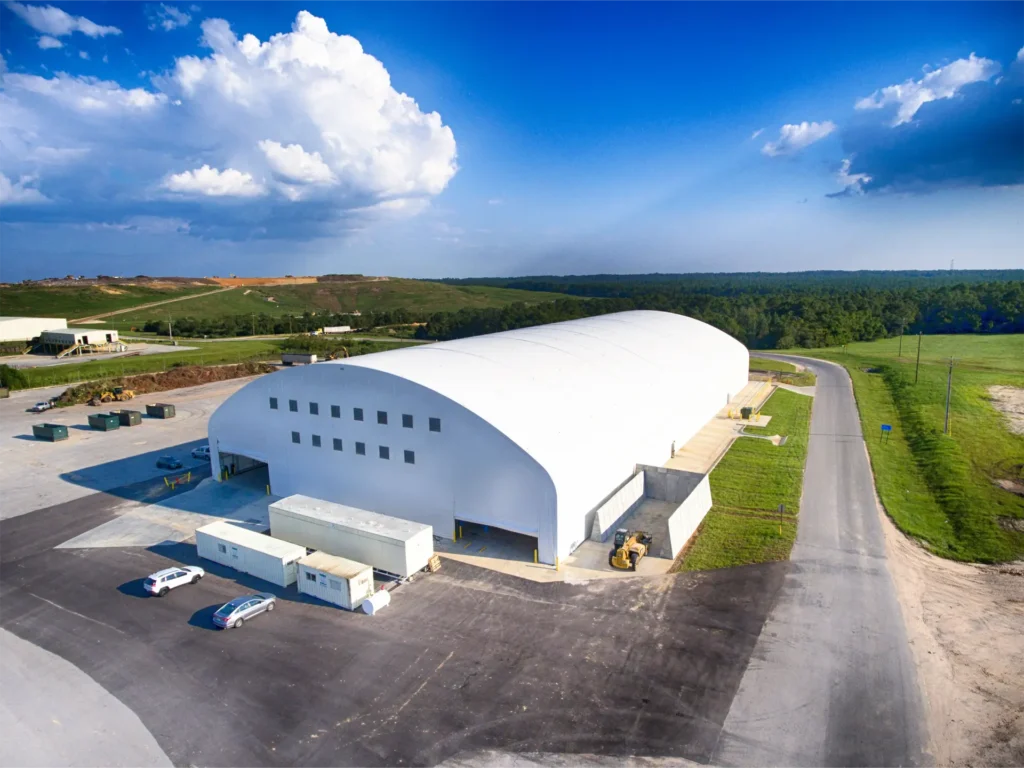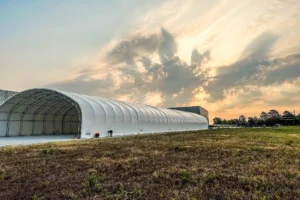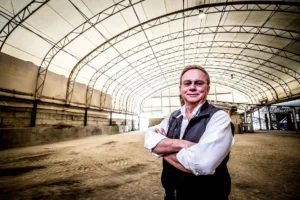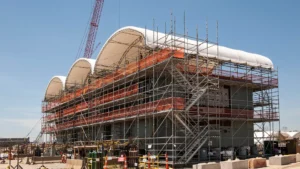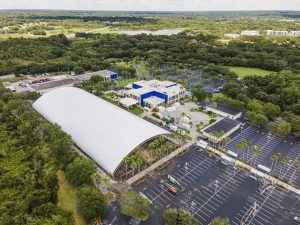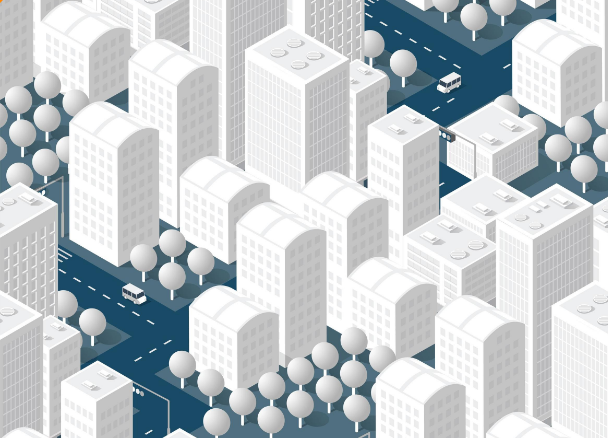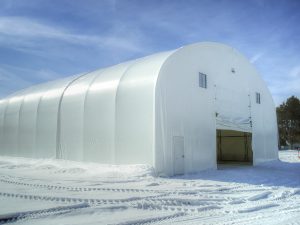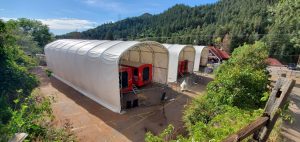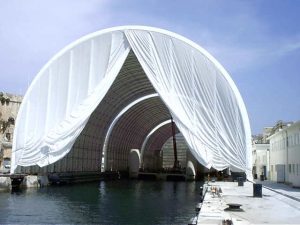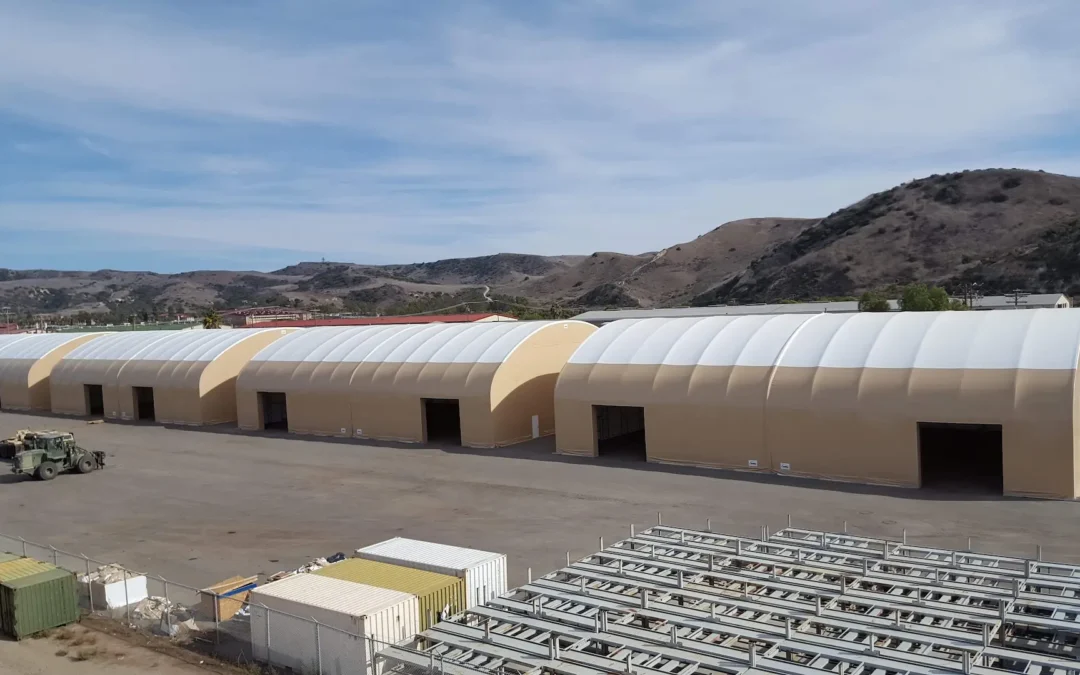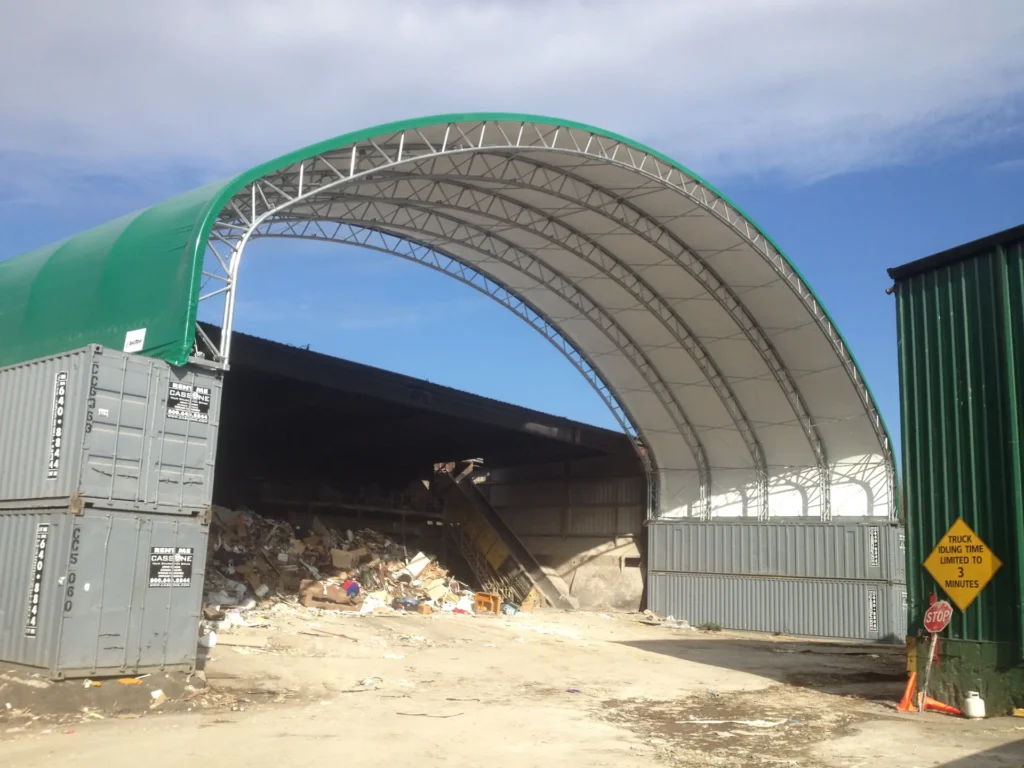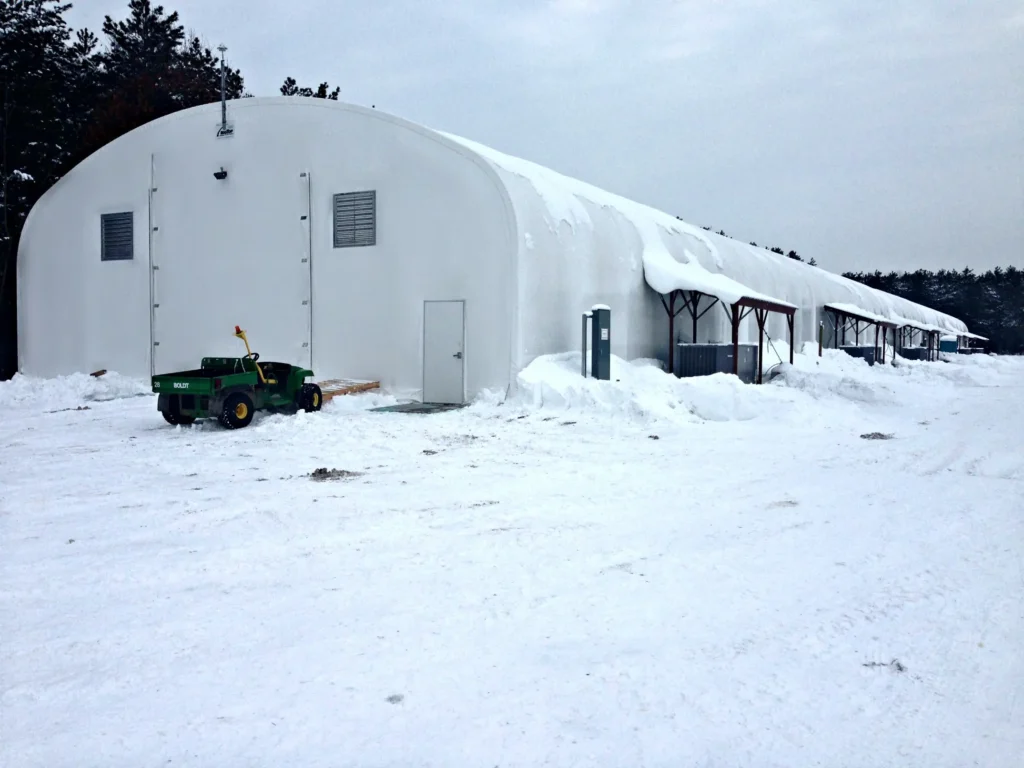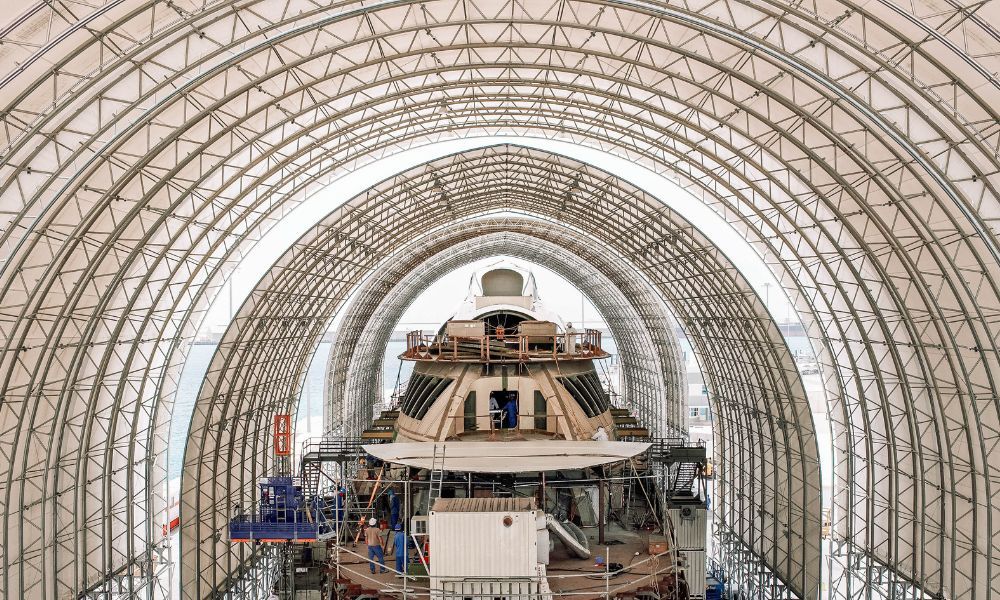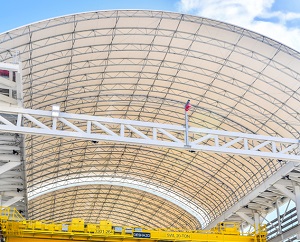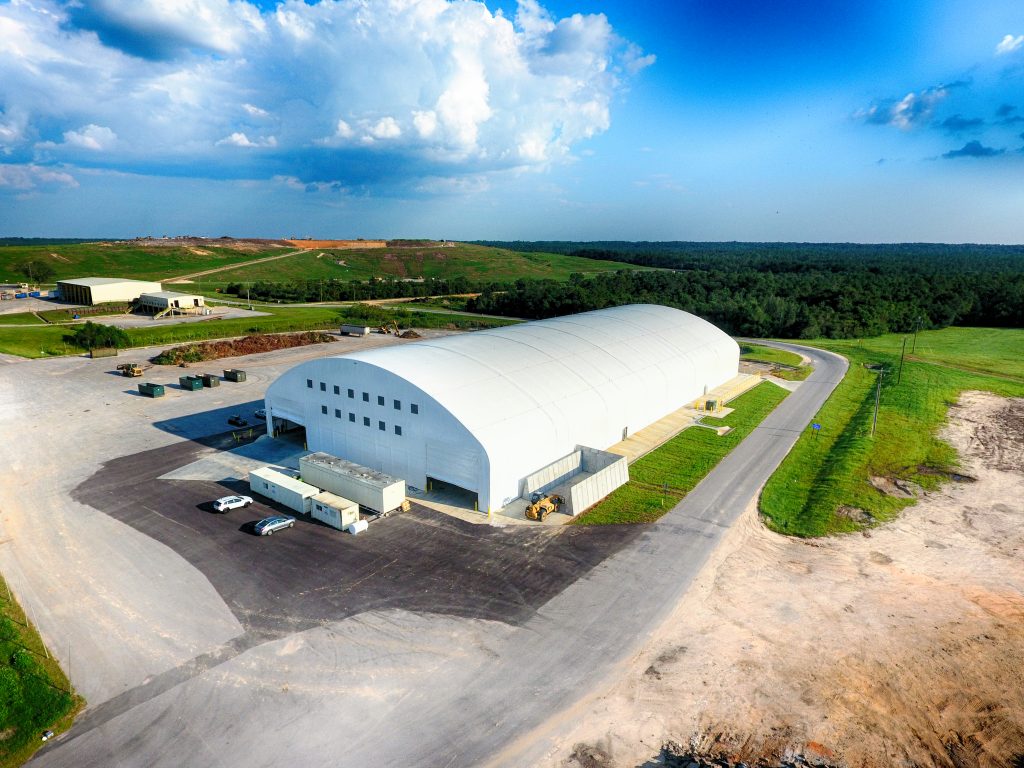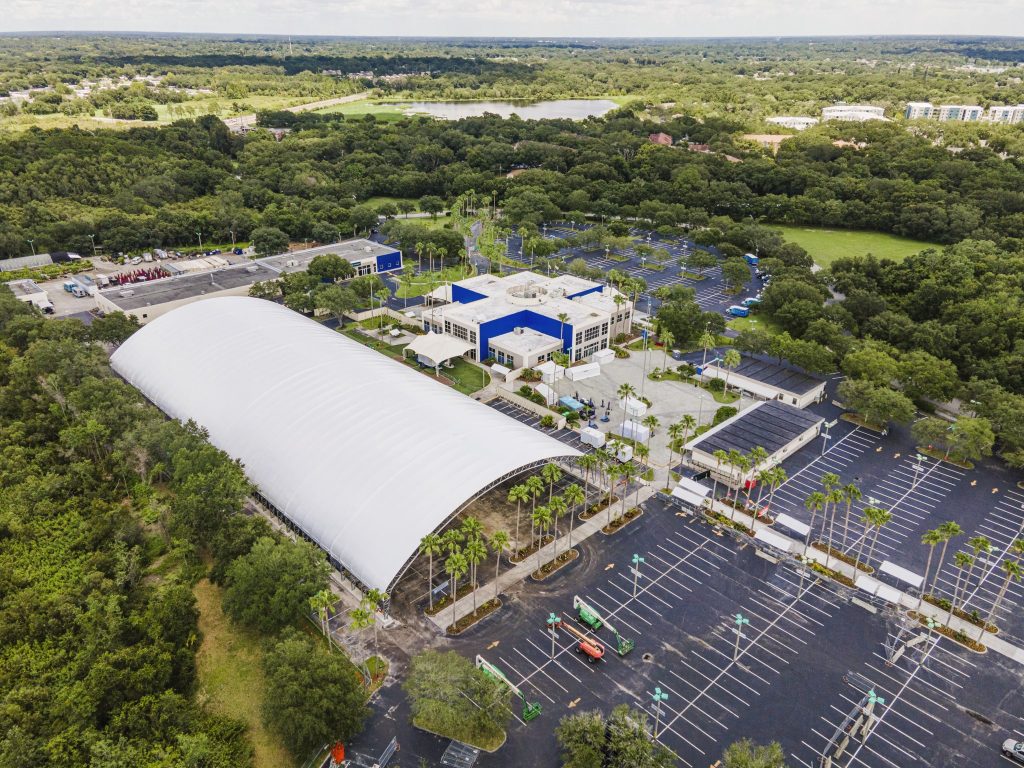Over the past two decades, tensile fabric building structures have become increasingly popular among architects, designers, and businesses alike due to their beauty, flexibility, strength, and cost-effectiveness. More than that, though, there are many reasons why tension fabric buildings are the wave of the future in terms of sustainable construction methods and green design strategies that will make a positive impact on the planet and people’s lives for years to come. Here are just a few examples of fabric building green construction trends.
Green construction trends fabric buildings
In recent years, green construction has become a major focus for eco-conscious building owners. As a result, alternative forms of construction that can minimize environmental impact have gained popularity in both private and commercial settings. One such trend is architectural fabric structures, which combine green components with innovative design to create structures that maintain energy efficiency while reducing waste and environmental damage during manufacturing and installation. Because they are made from lightweight, biodegradable materials, textile buildings can be transported to locations that lack infrastructure without causing excessive stress on roadways or nearby ecosystems. They also eliminate some of the waste created by traditional construction materials because metal poles or beams are not necessary in fabrication.
Cost savings from prefabrication
Since fabric buildings can be constructed quickly with minimal labor, they can save you a considerable amount of money on labor costs. Plus, since fabric buildings utilize both prefabricated and on-site components, they tend to have quicker turnaround times and shorter project schedules than other building methods. This not only saves you money—it also helps ensure that your projects stay on schedule and on budget!
The environmental benefits of fabric buildings
Building a fabric structure is better for Mother Earth. Because fabric buildings have no foundation, you can place them anywhere: on a flat surface, on ground that’s too rocky to support traditional structures, or even underwater! It doesn’t matter if it rains or snows—even if your surroundings change over time (like if a lake expands). There’s no risk of land erosion, damage from flooding or cracking. In fact, studies show that these types of big top structures actually improve land around them by creating an environment that encourages plant growth. As long as you make sure your structure is attached to a solid beam and secure enough so winds won’t destroy it during storms, it should be able to last for a very long time! In fact some fabric structurers erected in WWII still stand today.
Low labor costs
Similar to stick-built construction, tension fabric buildings are easy to assemble. They do not require expensive scaffolding or hoisting services that many steel and concrete structures rely on. Everything is can be done with simple hand tools. Due to their simplicity, fabric membrane structures can be erected much more quickly than other types of building methods. While it takes an experienced crew around a week to erect a steel structure and around six weeks for something made from concrete, tension fabric buildings can take less than a week (size and assembly team depending). Most parts are pre-assembled and manufactured in our warehouse, maximizing productivity and speeding up assembly time, improving cost-effectiveness even further while reducing risk factors associated with weather delays.
Flexibility to build on tough sites
Because you can install a tension fabric building without a crane (if you’d like), it’s ideal for spaces that wouldn’t otherwise be suitable for construction. These structures can be installed on difficult and awkwardly shaped terrain—and they can even be built over existing buildings. There’s no need to tear anything down or waste time doing construction work in tight areas; instead, you get to create something new and flexible.
Innovation in design and technology with fabric buildings
Fabric buildings continue to expand their place in commercial and industrial applications, particularly as an alternative to traditional architectural designs. Thanks to advanced technology and lighter-weight, innovative materials that don’t sacrifice quality or strength, designers can build bigger and better structures faster than ever before. This means you’ll always be at least one step ahead when it comes to design preferences, budgeting and efficiency with a Big Top fabric building over our traditional counterparts.
